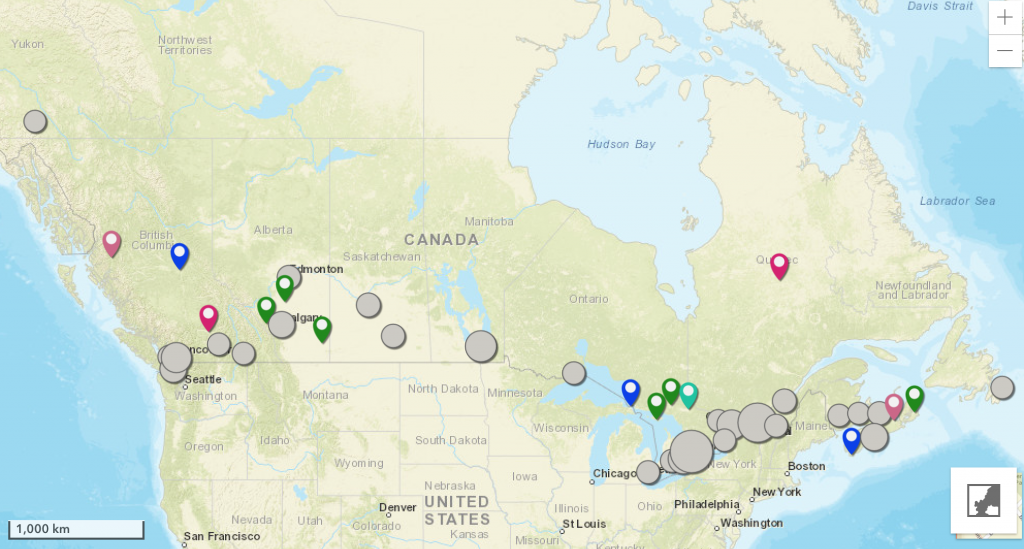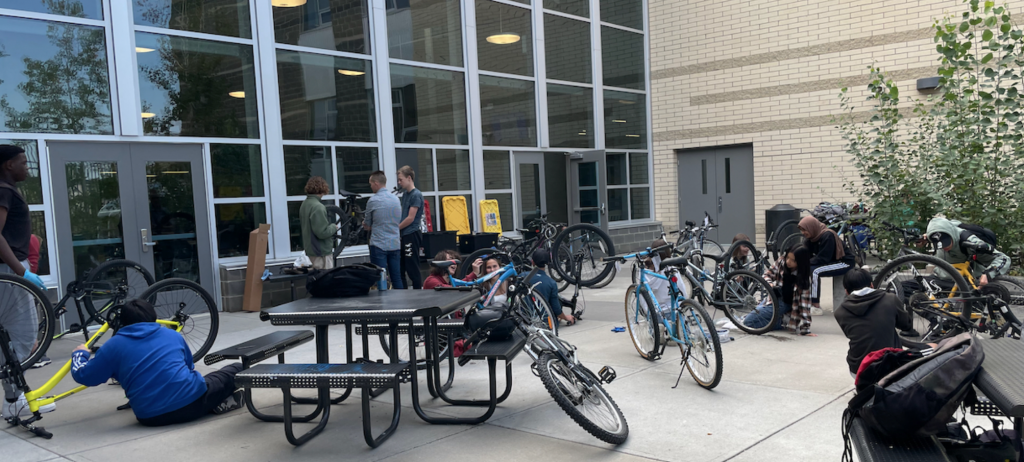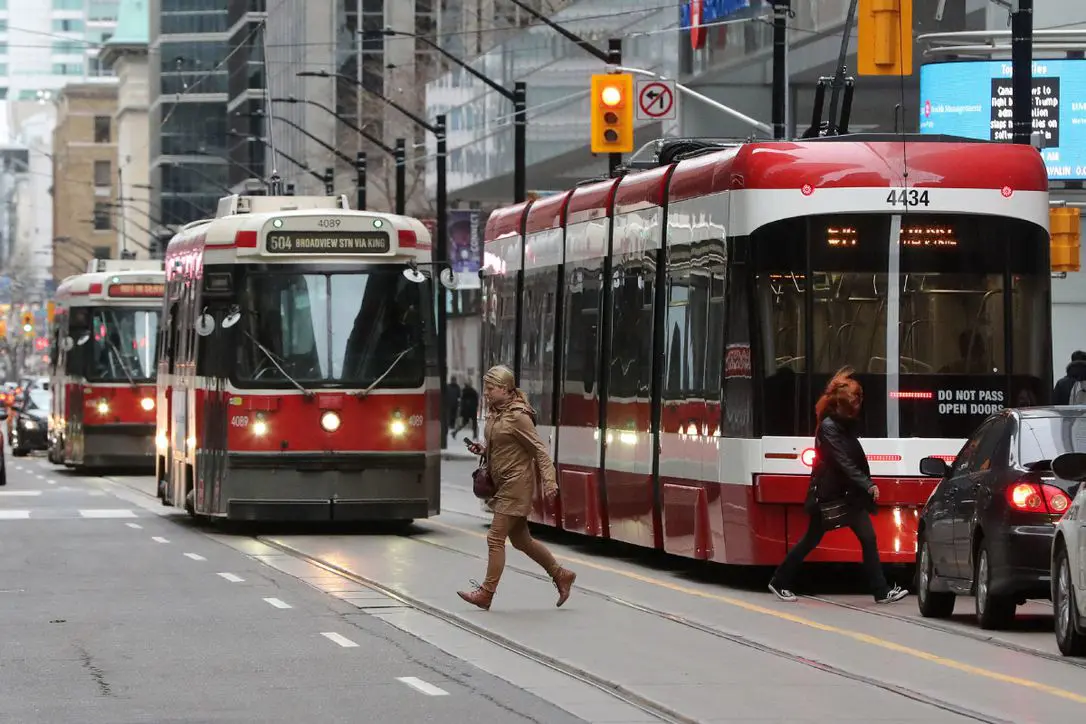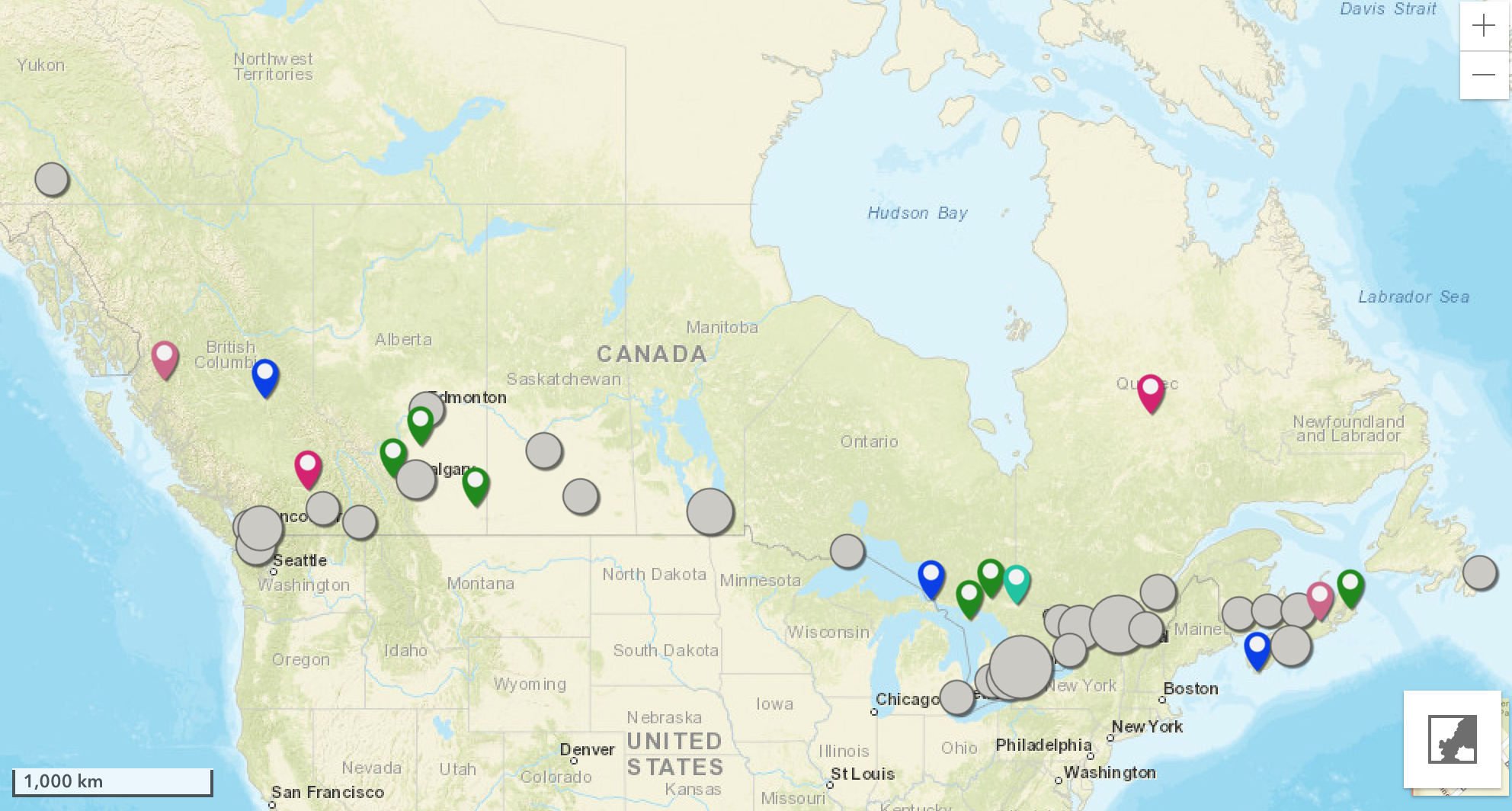New Interactive Map and Updated Catalogue of Community Initiatives Addressing Transport Poverty Provides Valuable Repository of Local Knowledge for Mobilizing Justice Researchers and Partners
Nancy Smith Lea is the Community Co-Lead of the Mobilizing Justice Transportation Modes Thematic Working Group and a Senior Advisor at The Centre for Active Transportation (TCAT) at Clean Air Partnership.
I was recently on a call with board members of a newly formed cycling organization in rural Canada. My colleague and I are assisting this team of devoted volunteers to set strategic priorities and develop an operational plan to improve and increase cycling in their community. One board member asked “Has anything like this been attempted in other small rural communities?” Having recently completed an update of the Catalogue of Canadian Community Initiatives Addressing Transport Poverty, I could respond with authority, “Yes!”
The catalogue is a project of the Mobilizing Justice partnership and The Centre for Active Transportation (TCAT). It documents and describes community initiatives across Canada addressing transport poverty and increasing transportation options beyond the private automobile. Like the rural cycling group, many of these initiatives begin as small groups of passionate citizens coming together around kitchen tables or in community centres to discuss a prevalent lack of transportation options that are safe, comfortable, affordable, and convenient.
For the past two years, I’ve been fortunate enough to oversee the cataloguing and mapping of all this local community knowledge and resourcefulness. I’m struck by the totality of what all of these initiatives represent. Seeing the accumulated effort, passion and time spent across the country to address transportation inequity is humbling. People coming together around a shared problem can catalyse efforts to address significant issues that have been overlooked and identify steps needed to resolve them. Community initiatives facilitate local networking and capacity building, demonstrate the feasibility of new ideas (e.g. Community Bicycle Network’s popular bicycle-lending program, which led to the creation of Toronto BikeShare), and can provide a valuable touchpoint for initiating authentic two-way communication between academics, practitioners and government decision-makers.
Despite the myriad benefits of community-led projects, they face considerable ongoing challenges, with lack of continuous funding being the most serious and pressing. By their nature, these initiatives can be quite fleeting, reliant as they are on volunteers’ precious energy and passion. As a result, part of the updating process of the catalogue is the poignant removal of valuable projects that have folded (e.g. the well-loved and successful Cycling Into The Future).
Tough as it is to see exceptional community initiatives close down, their ongoing existence often points to persistent problems within our transportation systems across the country. In an ideal world, many of these initiatives would indeed be short-lived and ultimately replaced by implementing systemic solutions. In a rich country like Canada, it’s unjust to rely indefinitely on volunteer tenacity to ensure that people get from point A to point B safely and with dignity.
The catalogue was first released in 2021 (compiled by Sabat Ismail), with an update in 2022 (by Kara Martin) and again in 2023, accompanied by an interactive map created by Simon Fraser University graduate student Helena Yin. The map provides a visual overview of the close to 300 community initiatives in the catalogue. Using this map, it’s possible to search for specific initiatives, organizations and addresses or refine your search using filters. Clicking on points in the map will provide information about the initiative(s) in that location. We hope it will be useful for advocates, academics, and practitioners alike to explore and learn about the wide range of inspiring ways communities support transport equity.

Screenshot of the interactive map of the Canadian Community Initiatives Addressing Transport Poverty. The pin colours correspond to the mode focus of the initiative. Where there is a circle instead of a pin, this represents two or more community initiatives at one location. The bigger the circle, the more initiatives there are at that location.
A sampling of new highlights from the catalogue include:
- Ecology Action’s Pop-Up Bike Hub was initially piloted in March 2020 during the height of the first wave of the COVID-19 pandemic to address the barrier of access to bike repair services in rural areas. Since then, the pop-up has travelled to 24 communities across Nova Scotia and helped over 1,200 bikes get safely rolling in their communities.
- Community Reach North Simcoe delivers transportation programs that provide rides for residents with limited income and no access to transportation or those who are unable to use public transit due to physical, cognitive, visual, or sensory disability.
- Youth En Route was created in 2021 to empower Calgary youth to be independent and make a green, healthy choice to get to school and beyond.

Youth en Route delivers in-school programming in Calgary to break down barriers youth face in choosing active travel.
For the duration of the Mobilizing Justice project, our team will continue to monitor community action addressing transport poverty across Canada, and we encourage the active use of the updated catalogue and new map. Some possible uses of these resources could include:
- Community organizations could scan the catalogue for the most innovative and effective initiatives (including those on transportation modes they are less familiar with) that could be replicated within their respective communities. This could be especially useful for community groups just starting out as well as for more experienced groups looking for new ideas.
- Class assignments created by university professors or independent student projects to explore research questions such as:
- Where are the hot spots of community initiatives across the country, and are there commonalities between them? Are clusters due to broader community inequities due to racial, class, or gender discrimination?
- What are some examples of successful community initiatives that have worked themselves out of “business” by achieving their goals? What is a typical trajectory, and what are the most significant factors that led to their success? Alternatively, why do some community initiatives end prematurely? What are some common factors leading to dissolution, and what happens after they do? (e.g., is the work taken up by another community organization or government body?)
- How are community initiatives incorporating equity and restorative justice into their work? How can this inform transportation planning, research, and decision-making?
- Municipal staff and government decision makers could explore innovative community-led transportation programs and practices that governments could scale up or generate ideas for strengthening policies and legislative contexts.
These are just a few ideas that will hopefully spark even better ones! We hope these resources will be helpful in better understanding the transportation barriers and adaptive practices being undertaken across Canada and ultimately inform the development of evidence-based policy recommendations to advance transport equity.
You may also like
 Documenting Canada’s Community Response to Transport Poverty: A 5-Year Review
Documenting Canada’s Community Response to Transport Poverty: A 5-Year Review
With the recent release of the Canadian Community Initiatives Addressing Transport Poverty Catalogue, accompanying report, and interactive web map, a multi-year effort… Read More
 Findings from the City of Grand Rapids’ Shared Micromobility Free Fare Pilot Program
Findings from the City of Grand Rapids’ Shared Micromobility Free Fare Pilot Program
The Free Fare Pilot Shared micromobility systems, such as bikeshare and scootershare, are increasingly important to cities’ transportation strategies, as they seek to move… Read More
 The Different Price Tags of Access: Transit, Housing Affordability and Demographics
The Different Price Tags of Access: Transit, Housing Affordability and Demographics
Introduction Building a new transit system? Great for commuters. Even better for housing prices. When cities build transit, nearby land and housing prices often shoot… Read More
